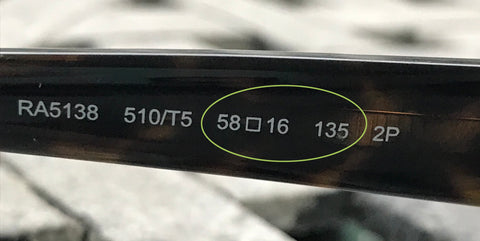Fit Guide


Deciphering the Numbers
Not everyone looks good in Lennon specs or steampunk frames. It’s just a cruel fact of life. But you can trust your pals at the Sunglass Museum when we tell you not to fear: There is a glasses style that will work for your face shape. We promise.
A Guide to the Most Flattering Glasses for Your Face Shape
Before we delve into your cranial structure, check out our guide for measuring your glasses. The shape of your face won’t matter if you’re not wearing properly fitting specs.
Once you’ve got your personal measurements, take a gander at our face shape chart below. Keep in mind this is only a guide and that asymmetrical faces are normal.

…And Then There Are the Shapes to Avoid
The above is only a guide — not a set-in-stone fashion commandment. Plus, many people have combination faces — oval with square lines, for example.
But, generally speaking, certain face shapes should avoid certain styles of glasses:
Circle/Round Face: Avoid circular frames (although oval often works).
Oval Face: Lucky you! Pretty much every shape flatters your bone structure.
Triangle Face: Sorry, but aviators often overshadow your natural lines.
Square Face: Cat-eye frames are often unsuited to more angular faces.
Misc. Fit Factors
Other considerations — including your own personal sense of style — play a role. Even if you have a round face, square lenses might not suit you depending on your eye spacing, cheekbones, or even just your je ne sais quoi.
The glasses themselves are part of the equation — are the frames thick or thin? What color are the frames? Light-colored or transparent frames can play down the roundness of a face. What color are the lenses? Believe it or not, changing a lens color can give a set of shades a whole new vibe.